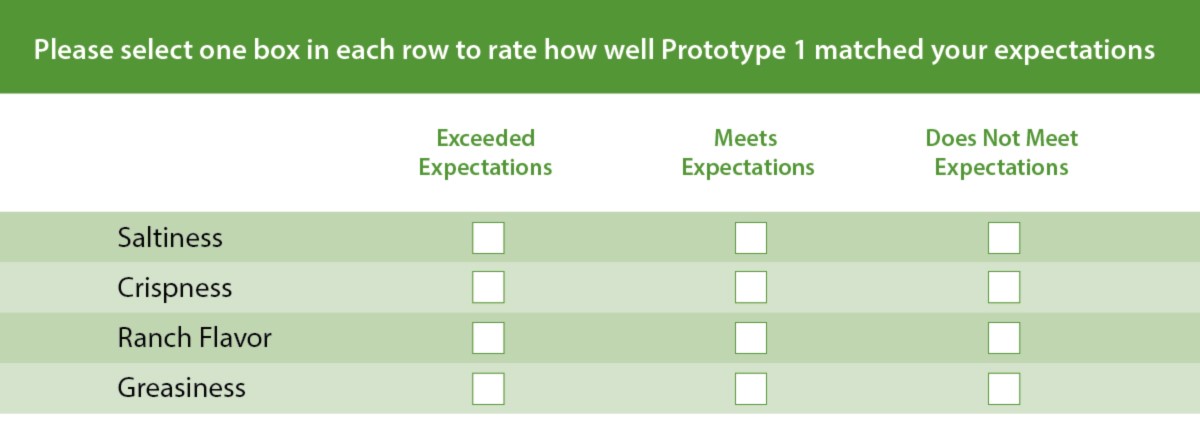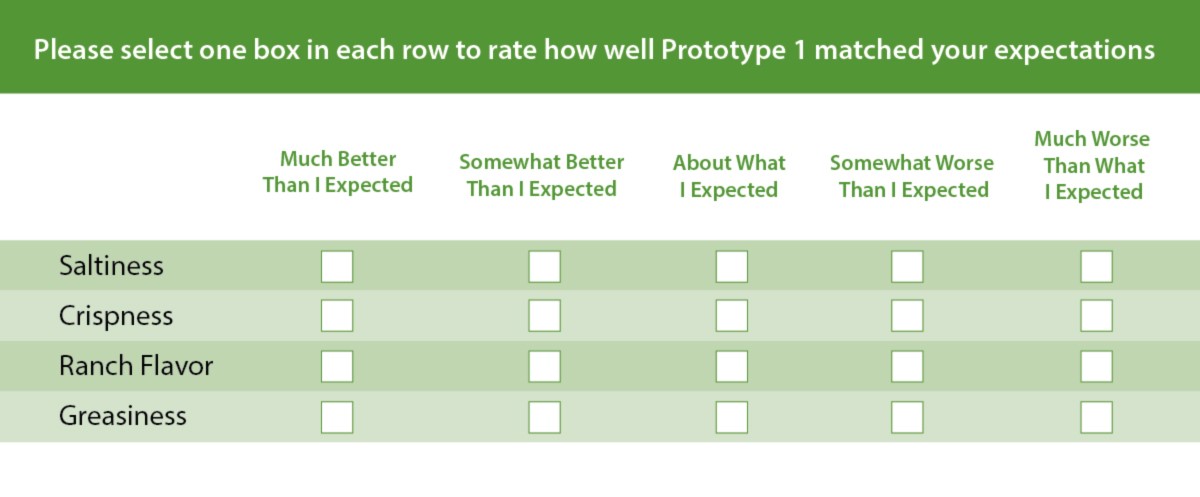Recently, we were collaborating with a client about a project, and she asked us which Expectation Scale we should use – 3 or 5 point.
If you’re not familiar with Expectation Scales, this is what they typically look like:
This is a 3-Point Expectation Scale:

This is a 5-Point Expectation Scale:

Expectation Scales are widely used in market research. They are:
– easy for people to understand
– can be deployed in virtually any category
– provide definitive information across a multitude of factors
So, they have a lot going for them!
While the 5-Point Expectation Scale is useful and widely popular, the 3-Point Scale is easier for consumers to work with, and it carries more meaning for the researcher when it comes to analysis.
The beauty of a 3-Point Scale is that it does not leave room for a gray area. It requires that the consumer make a definitive answer – positive, negative, or neutral. While the 5-Point Scale might soften the blow a bit for an under-performing product, it also can artificially boost an average product. On the other hand, the 3-Point Scale leaves minimal room for error – either positively or negatively.
I think of our preferences for expectations scales a bit like our preferences for removing a band aid – you can go slowly, taking off the edges bit by bit until you peel it off – that’s a 5-Point. Or, you can go fast and just rip it – yup, that’s the 3-Point! Now, which one are you?

